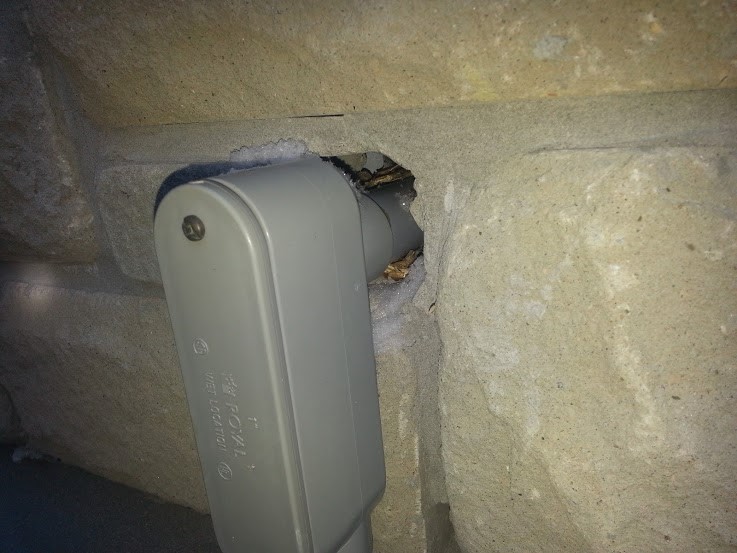Spot a mouse. Grab the poison. These are our first thoughts at the discovery of infestation. Although poison is deadly, there’s no way you can kill every rodent. Also, who knows what’s actually in these things. What are the different types of mouse poisons and how do they work?

Mouse activity through basement insulation.
First-Generation Anticoagulants
This type of poison needs to be consumed several consecutive times. So, you need to get the mouse to dine on the bait every meal for a while. It only works through multiple doses. The first-generation compounds are excreted within a week by animals. It still poses a poisoning risk to children, pets and wildlife. There are three main chemicals found in this stream of pesticides Chlorophacinone, Diphacinone and Warfarin. All have high toxicity within the oral dosage.
These poisons work to develop blood clots in blood vessels. The clots can migrate to other parts of the body. It’s odorless and tasteless and commonly mixed with a bait. Sometimes it’s added to talc or tracking powder which accumulates on rodent’s skin and fur consumed when grooming. In many cases chemicals like Warfarin are used less because mice are tolerant to the poison. It’s been heavily used since the 1950s.
Second-Generation Anticoagulants
These poisons are much more potent than the first-generation. A lethal dose can be consumed in one feeding. The main problem with these stronger toxins is they’re passed through dead bodies. So, scavengers can also be affected by the poison. Second-generation anticoagulants are used to poison predatory wildlife. Also, they raise the danger of severe poisoning in children, pets and non-target wildlife. Some examples of compounds are Brodifacoum, Bromadiolone, Difethialone and Difenacoum.
The effects of second-generation anticoagulants are much more severe. Poisons inhibit the enzyme vitamin K epoxide reductase. This means it steadily decreases the level of active vitamin K in the blood. Vitamin K is required for the synthesis of important substances which ultimately results in blood clotting.

A mouse entry point through an unsealed utility line.
Waterloo mouse removal services
Poisons can only get you so far as they don’t do anything to prevent future infestation. You could also end up with dead rodents all through your house in difficult to reach places. Also, small children or pets could ingest them causing severe bodily harm. Before using rodenticides to get rid of mice you should contact Skedaddle Humane Wildlife Control.
Our mouse control process starts at the source by identifying how and where mice are entering your house. We then use one-way doors to evict the mice currently inside your house and seal off any alternate openings.
Call us today! 1-888-592-0387


